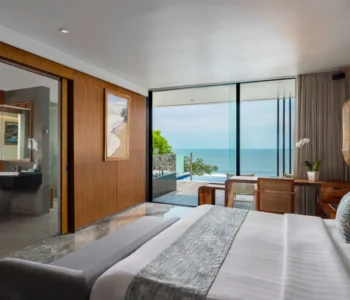European painters have long been captivated by the beauty of Indonesia. The stunning landscapes and rich colorful heritage have served as an inspiration for many renowned artists throughout history. In this article, Sake Santema from Indies Gallery presents a few works from his collection by Willem G Hofker, whose life and work became deeply intertwined with Indonesia. Hofker’s artistic journey led him to the archipelago, where he dedicated a significant portion of his life to capturing the diverse aspects of Indonesia through his art.

Early Life and Artistic Beginnings
Born in 1902, in The Hague, Netherlands, Hofker was already an accomplished draftsman at the age of twelve, and at the age of fifteen had decided that he no longer wished to pursue his school studies. He enrolled in the Hague Academy of Fine Arts, where he honed his skills and developed a keen interest in portraiture. Hofker was a rather unadventurous and cautious person but was lured by a proposal by one of his most important patrons, Jhr. J.E. Backer, the Amsterdam director of the powerful Koninklijke Paketvaart Maatschappij (KPM, Royal Packet Navigation Company).
Backer had commissioned Hofker to paint a large portrait of Queen Wilhelmina for the KPM Headquarters in Batavia (now Jakarta), and had proposed that Hofker deliver it in person, after which he could travel freely through the Indies with KPM, in return for fifty drawings or paintings of any Indonesian subject of his choice. These drawings would then be used to promote the growing tourist trade to Java and Bali.


Arrival in Indonesia
In 1938, Hofker arrived in the Dutch East Indies (now Indonesia) with his wife Maria Hofker-Rueter, also an accomplished artist. This move marked a turning point in Hofker’s career as he began to immerse himself in the rich tapestry of Indonesian life.
He and his wife travelled from Batavia to Bogor to Bandung, and eventually settled in Bali till the Japanese invasion in 1942. The Hofkers chose to live a new life in Bali where they were fascinated by the beauty and richness of the landscape, architecture, culture and religious ceremonies.

Courtesy of Indies Gallery
Capturing Indonesian Life
Hofker’s art is celebrated for its ability to convey the depth and diversity of Indonesian culture. He frequently depicted scenes of daily life, portraying the grace and beauty of the people against the backdrop of their unique customs and rituals. His masterful use of colour and light captured the essence of the archipelago, from the bustling markets to serene village landscapes.
While Hofker excelled in portraying the broader Indonesian culture, he also became renowned for his exquisite portraits. Whereas his European portraits were mostly the result of commissions, in Bali he had the freedom to choose whoever he wished to paint, male or female. His subjects ranged from ordinary villagers to members of the royal families. His ability to capture the individuality and spirit of his subjects earned him recognition and praise.

Courtesy of Indies Gallery.
World War II and Internment

Courtesy of Indies Gallery
Post-War Contributions
Unable to gain permission to return to Bali, Hofker and his wife bade farewell to Indonesia and returned to Holland in 1946. After the war, Hofker resumed his artistic pursuits and returned to engraving in the immediate years, where he found a new form for some of the most beautiful and significant Balinese canvases as etchings and lithographs.
Sometimes recreating lost works from memory and sometimes combining details from existing paintings to discover new variations on a Balinese theme. Apart from working on portrait commissions, Hofker would sketch Amsterdam scenes, its architecture and castles in the Netherlands. His art not only served as a visual documentation of Indonesia but also contributed to the broader understanding of the nation’s cultural richness.


Legacy and Recognition
W.G. Hofker’s contributions to Indonesian art are celebrated to this day. His legacy lives on through the continued appreciation of his works, which are displayed in museums and private collections worldwide. Ruang Hofker, in the Neka Museum in Ubud, stands as a testament to his enduring impact on the art scene in Indonesia.
W.G. Hofker’s life and art are a testament to the profound connection between an artist and the environment that inspires them. Through his brushstrokes, he captured the spirit, culture, and beauty of Indonesia, leaving behind a body of work that continues to be cherished, and sometimes criticized, for its evocative power and cultural significance.
The works by Hofker shown in this article are offered for purchase by Indies Gallery, a dealer in authentic maps, prints, books and photographs, dating from the fifteenth to the twentieth century. Indies Gallery also offers these decorative artworks as reprints: indiesgallery.com | oldeastindies.com









